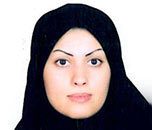Day 1 :
Keynote Forum
Wayne Grayson
Honorary Professor
Keynote: The dermatopathology of HIV/AIDS: Lessons learned
Time : 9:00 to 9:25

Biography:
Wayne Grayson obtained his undergraduate medical degree from the University of the Free State in South Africa. He received his specialist training in Anatomical Pathology at the University of the Witwatersrand, Johannesburg (WITS) and the S.A. Institute for Medical Research, and was awarded a PhD in 2001. He left full-time academic practice in 2008 to join Ampath National Laboratories, but continues to serve as an Honorary Professor in the School of Pathology at WITS University. Dr. Grayson is a member of the executive committee of the International Society of Dermatopathology, representative for Africa on the International Committee for Dermatopathology, and an editorial board member of the American Journal of Dermatopathology. He is author of the chapters on infectious diseases and HIV/AIDS-related skin pathology in McKee’s Pathology of the Skin with Clinical Correlation, and one of the co-authors of the book entitled Kaposi Sarcoma: A Model of Oncogenesis.
Abstract:
More than 90% of patients with HIV/AIDS will develop mucocutaneous complications during the course of their illness, and skin disease may be a presenting feature of undiagnosed HIV/AIDS. Skin biopsy is an inexpensive yet invaluable diagnostic tool, whose greatest value resides in facilitating early identification of unsuspected and potentially lethal opportunistic pathogens. Relevant histochemical stains, immunohistochemical studies and/or ancillary molecular investigations studies may be carried out on formalin-fixed, paraffin-embedded skin biopsy material and serve as an adjunct to more precise diagnosis of certain infective or neoplastic conditions. The Pathologist must remain cognizant that certain conditions may present with atypical clinical and/or histolopathological features. The possibility of an adverse drug reaction should always be considered in the differential diagnosis of inflammatory dermatoses. Knowledge of the CD4 count, viral load and antiretroviral therapy status is important in determining whether or not the cutanenous findings are a potential manifestation of the immune reconstitution inflammatory syndrome. Shave biopsies should be discouraged as these are often not sufficiently representative. Examination of multiple serial sections is essential, especially when a folliculocentric process is suspected. It is prudent to recommend that additional biopsies be performed for microbiological examination, where necessary. A comprehensive panel of special stains should always be carried one when an infection is suspected, bearing in mind that the histological picture may differ significantly from that encountered in non-immunocompromised hosts (e.g. mycobacterial infection exhibiting abscess formation instead of granulomatous inflammation). Although rare, skin biopsies may declare more than one pathological process; it is, therefore, critically important that tissue sections are carefully scrutinized for the presence of dual or multiple pathological processes (e.g. coincidental cryptococcosis or tuberculosis in a biopsy for confirmation of Kaposi sarcoma). Awareness of the spectrum of recently described Kaposi sarcoma variants is required. The importance of careful clinico-pathological correlation cannot be overstated.
- DAY 1
Session Introduction
Yaron Shargall
Head, Division of Thoracic Surgery, McMaster University
Title: Venous thromboembolism in thoracic surgery patients: An on-going challenge

Biography:
Shargall Yaron completed his medical school and bachelor in medical sciences and immunology at the Hebrew University in Jerusalem. He then completed cardiothoracic residency at the Haddasah University Hospital of Hebrew University Jerusalem, Since October 2010 he is the division head of Thoracic Surgery at McMaster University and St. Joseph’s Healthcare in Hamilton, Ontario Canada. He is an Associate Professor of Medicine and Surgery at McMaster University and an adjunct Associate Professor of surgery at the University of Toronto. He is the local LHIN 4 (Ontario) thoracic oncology lead and serves at multiple expert panels for Cancer Care Ontario. His main research focus is on post-discharge care for thoracic surgery patients and he has received numerous grants, including the Canadian Institute of Health Research (CIHR), Heart and Stroke Foundation and Ontario Thoracic Society. He is currently chairing the European Society of Thoracic Surgeons’ working group on VTE in Thoracic Surgery. .
Abstract:
Venous Thromboembolism (VTE) is a common postoperative complication resulting in significant morbidity and mortality. Current practice indicates prophylaxis with Low molecular weight (LMWH) or unfractionated heparin during hospital stay. VTE in thoracic surgery is an on-going challenge for surgeons and clinicians looking after those patients. There is a growing evidence that the incidence of VTE events around and after thoracic surgery in significant. It is increasingly recognized that such an event might have a substantial detrimental impact. Yet, high level evidence is, at best, sparse. We have conducted a Delphi protocol survey amongst Canadian surgeons, hematologists and thoracic anesthesiologist which showed that VTE prophylaxis practice is diverse and that there is little agreement within clinicians regarding initiation of treatment, type of prophylaxis and duration. In an additional study, we performed a multicenter prospective cohort study where 157 thoracic oncology patients undergoing resection underwent postoperative assessment with CT PE protocol and venous Doppler to evaluate the real incidence of VTE. All patients received guidelines based pharmaceutical and mechanical prophylaxis until hospital discharge. Patients underwent chest CT angiography with PE protocol and bilateral lower extremity venous Doppler ultrasonography at 30±5 days after surgery. VTE incidence was 12.1% (19 VTE events) including 14 PE (8.9%), 3 DVT (1.9%), one combined PE/DVT and one massive left atrial thrombus. Only 4 patients (21.1%) were symptomatic at diagnosis. The 30-day mortality of patients with VTE events was 5.2%. Univariate analysis did not demonstrate significant differences between the VTE and non-VTE populations with regards to baseline and surgical characteristics. We are currently conducting a multicenter randomized control trial comparing post discharge extended prophylaxis with LMWH vs. Placebo, the results of which has the potential to influence and change current practice of in-hospital only VTE prophylaxis. An additional Canadian multi center prospective longitudinal cohort study is undergoing to evaluate the real incidence of VTE events in patients undergoing esophageal resection for cancer. The results of this study will help to support future research into the role of extended prophylaxis in the very high risk population.
Anthony Okorodudu
University of Texas, USA
Title: Lung disease in cement factory workers: Implications of metals in cement dust

Biography:
Anthony O Okorodudu has been with the University of Texas System (UTMB) since 1989. He is a Distinguished Professor of Pathology and Director for services/programs. He has obtained his Doctorate degree in Pathology (University of Medicine and Dentistry of New Jersey) following an undergraduate degree from Rutgers University, New Jersey. He also holds an MS degree in Management, Computing and Systems (Houston Baptist University, Texas), MBA degree (Rice University, Texas), and completed his Fellowship training in Clinical Chemistry at Hartford Hospital in Hartford, CT. He is a Diplomate of the American Board of Clinical Chemistry and a Fellow of National Academy of Clinical Biochemistry.
Abstract:
Introduction: Exposure to cement dust is one of the most common occupational hazards. It has been associated with the development of laryngeal cancer and other metal related diseases. The mechanism of injury to lung cells (alveolar macrophages and type II epithelial cell) and disease development by this particulate is still unclear. Objectives: We evaluated the immunotoxicity of two cement dust samples (CDN and CDU) and clinker (CN) using alveolar macrophages and type II epithelial cell relative to their metal contents. Methods: Metals (chromium, copper, lead, manganese, nickel, cadmium and mercury) were quantified using graphite furnace atomic absorption spectrophotometry, while hexavalent chromium (Cr (VI)) was determined by colorimetric method. Endocytosis of particles was assessed using transmission electron microscope. Additionally, apoptosis (annexin-V-PI), intracellular reactive oxygen species (iROS) generation and reduced glutathione (GSH) were determined using flow cytometry. Tumor necrosis factor-α (TNF-α), interleukin-1β (IL-1β) and macrophage inflammatory protein-2 (MIP-2) secretion from NR8383 were evaluated by ELISA technique. Results: Our results indicated that Cu, Ni and Mg were significantly higher in CDU relative to CDN. Both total Cr and Cr (VI) were also higher in CDU than in CDN. Cadmium was higher in both CDN and CN. Mercury was more in both CDN and CN, while lead (Pb) was only significantly higher in CN. Alveolar epithelial cells internalised clinker predominantly at the membrane bound vacuoles. The CDU induced more apoptosis, intracellular ROS generation (22% higher) and reduced GSH compared with control, which may be related to the significant Cr (VI) level in CDU. Increase in IL-1β and TNF-α secretion were consistent in both CDN and CDU, while MIP-2 was not significantly increased in cells exposed to both CDU and CDN but significant in cells exposed to clinker. Conclusion: The data suggest that the high metals and Cr (VI) concentrations may be contributory to the pathologic basis of cement dust toxicity. Endocytosis of cement dust particulates, oxidative stress induced-apoptosis and induction of pro-inflammatory cytokines may be the key mechanisms of cement dust immunotoxicity in lung cells. This study revealed that cement dust exposure is a public health threat to both cement factory workers and people located near such factories.
Carol Apt
South Carolina State University, USA
Title: The stratification system of the United States: Correlations between social class and health

Biography:
Carol Apt has received her PhD in Sociology from Northeastern University in Boston, Massachusetts, USA, MA in Sociology from Boston University in Boston, Massachusetts (USA) and BA in Sociology from Indiana University in Indianapolis, Indiana. She also has a Certificate of French Studies from Ecole Lemania in Lausanne, Switzerland. She is currently a Professor of Sociology at South Carolina State University in Orangeburg, South Carolina, where she has been for the last 15 years. During that time she has taught Medical Sociology, Human Sexuality, Cultural Anthropology, Social Problems and the Sociology of Genocide, among others. She is also a Member of the South Carolina Medical Association Bioethics Committee and the Ethics Committee of The Regional Medical Center in Orangeburg, South Carolina. In addition, she is the host of a live, call-in radio talk show called ‘Talk to Me,’ which is broadcast on 90.3 FM-WSSB, also in Orangeburg. During her show she addresses listeners’ questions about sexuality and relationships.
Abstract:
The United States is stratified on the basis of class and there is both upward and downward mobility. An individual’s social class is determined by three factors: Education, occupation and income. It is often assumed that there are three social classes in the United States: Upper, middle and lower but this method of categorization is simplistic and does not give an accurate picture of America in the 21st century, as values, behaviors, morbidity & mortality, even weight, differ significantly by social class. This presentation will contain explanations of the American stratification system as it currently exists, along with descriptions of the key demographic variables of each social class. This presentation will focus on health issues faced by Americans in various social classes and will illuminate how social class can affect one’s health with emphasis on the interaction between maternal & child health, obesity, life expectancy, poverty and geographic location.
Xi Wang
University of Rochester Medical Center, USA
Title: Breast metaplastic spindle cell carcinoma and its mimics: An update through the discussion on real cases

Biography:
After completing her medical education in the Sun Yet-Sen University Medical School, one of the best medical schools in China, Dr. Xi Wang went to Harvard School of Public Health to be the research fellow and later on research associate. She finished her residency training in pathology in West Virginia University and fellowship training in Sloan-Kettering Cancer Center. She is currently the associate professor in Dept. of Pathology in University of Rochester Medical Center, with the major interests in breast and GYN pathology.
Abstract:
Metaplastic carcinoma is the malignant neoplasm that exhibits microscopic structural changes, which diverge from glandular differentiation. It is a heterogeneous group of tumors. The 2012 WHO classification based on the descriptive morphology has divided it into several different sub-groups, among which, spindle cell carcinoma (including fibromatosis-like metaplastic carcinoma) represents the most diagnostic challenge to pathologists, especially on core biopsies. Many breast lesions/tumors could present, at least focally, as spindle cell morphology. However, their clinical significance is greatly different, which makes the differential diagnosis very critical. The spectrum could at one end consist of hypertrophic scar/pseudoangiomatous stromal hyperplasia/nodular fascitis, the lesions mostly considered as a reactive/repair process, while the other end malignant phyllodes tumor/malignant adenomyoepithelioma/mesenchymal sarcomas. Previous malignant myoepithelioma carcinoma is now believed to be part of the spindle cell carcinoma. The morphological overlapping among these lesions sometimes could be overwhelming. A panel of markers for immunohistochemical stain is recommended, but they may not always be helpful. This presentation will use five real cases to discuss the detailed morphological features and immunohistochemical patterns of metaplastic spindle cell carcinoma and its mimics, including the key points for differential diagnoses.
Benjamin Norton
Imperial College Healthcare Trust, UK
Title: Delayed diagnosis of alpha-1-antitrypsin deficiency following post-hepatectomy liver failure: A case report

Biography:
Dr Benjamin Norton is a current junior doctor completing his post-graduate training at North West Thames foundation school as part of Imperial College Healthcare Trust. He completed his Medical Degree from Peninsula College of Medicine & Dentistry in 2015 and has a 1st Class degree in biosciences from the University of Exeter. He is the director and founder of Pulsenotes Ltd, a multi- award winning online teaching platform for undergraduate medical students.
Abstract:
Post-hepatectomy liver failure (PHLF) is a leading cause of morbidity and mortality following major liver resection. The development of PHLF is dependent on the volume of the remaining liver tissue and hepatocyte function. Without effective pre-operative assessment, patients with undiagnosed liver disease could be at increased risk of PHLF. We report a case of a 60 year-old male patient with PHLF secondary to undiagnosed alpha-1-antitrypsin deficiency (AATD) following major liver resection. He initially presented with acute large bowel obstruction secondary to a colorectal adenocarcinoma, which had metastasized to the liver. There was no signi cant past medical history apart from mild chronic obstructive pulmonary disease. After colonic surgery and liver directed neo-adjuvant chemotherapy, he underwent a laparoscopic partially extended right hepatectomy and radio-frequency ablation. Post-operatively he developed PHLF. The cause of PHLF remained unknown, prompting re- analysis of the histology, which showed evidence of AATD. He subsequently developed progressive liver dysfunction, portal hypertension, and eventually an extensive parastomal bleed, which led to his death; this was ultimately due to a combination of AATD and chemotherapy. This case highlights that formal testing for AATD in all patients with a known history of chronic obstructive pulmonary disease, heavy smoking, or strong family history could help prevent the development of PHLF in patients undergoing major liver resection.
Nasir Rajpoot
Associate Professor
Title: Digital pathology image analysis: Challenges and opportunities

Biography:
Nasir Rajpoot is an Associate Professor in the Department of Computer Science at the University of Warwick, UK. He is the founding Head of the BioImage Analysis (BIA) lab at Warwick since 2012 and an Honorary Pathology Consultant at the University Hospitals Coventry & Warwichshire, UK since Sep 2015. He has received his PhD in Digital Image Processing from the University of Warwick in 2001. During his PhD, he was a Postgraduate Research Fellow in the Applied Mathematics program at Yale University, USA during 1998-2000. He has published over 100 articles in the areas of histology image analysis, pattern recognition and image coding in journals of international repute and in proceedings of highly reputable international conferences. He has guest edited a special issue of Machine Vision and Applications on Microscopy Image Analysis and its Applications in Biology in 2012 and a special section on Multivariate Microscopy Image Analysis in the IEEE Transactions on Medical Imaging in 2010. He is a Senior Member of IEEE and Member of the ACM, the British Association of Cancer Research (BACR) and the European Association of Cancer Research (EACR).
Abstract:
The emerging discipline of digital pathology is poised to change the status quo in pathology practice for the better. A pathology department in a medium sized hospital deals with a workload of about 100,000 tissue slides every year, resulting in approximately 50 TB of high-resolution image data, compressed in a near lossless manner, per annum. The sheer size of multi-gigapixel images produced by digital slide scanners poses interesting technical challenges. On the other hand, the heap of image data linked with associated clinical and genomic data is a potential goldmine of invaluable information, as each high resolution image contains information about tens of thousands of cells and their spatial relationships with each other. I will present some of the recent developments in our group concerning digital pathology image analysis and tissue morphometrics from images of cancerous tissue slides. I will then discuss some of the main challenges in digital pathology and opportunities for exploring new unchartered territories.
Shroque Zaher
Norfolk and Norwich University Hospital, UK
Title: A rare case of primary pulmonary myxoid sarcoma

Biography:
Shroque Zaher has completed her pathology training at both the London and East of England deaneries, and has been awarded her CCT. She gained her FRCPath from the Royal college of pathologists, United Kingdom in 2015. Her main interests are lung and haematopathology, as well as medical education.
Abstract:
This case represents a rare entity – primary pulmonary myxoid sarcoma, of which to the best of our knowledge , only 10 other cases have been reported in the literature.They are defined by distinctive histomorphological features and characterised by a recurrent fusion gene. All tumours involved pulmonary parenchyma with a predilection for the endobronchial component. They appear to have a a predilection for females, with 7 of the 10 reported cases, occurring in women. Microscopically, they are lobulated tumours comprising cords of polygonal, spindle, stellate cells within myxoid stroma, morphologically reminiscent of extra skeletal myxoid chondrosarcoma. Tumours were immunoreactive for only vimentin and weakly focal for EMA, although our specific case was negative for these markers. In 7 of the 10 tumours , a specific EWSR1-CREB1 fusion gene was demonstrated by reverse transcription -polymerase chain reaction. This gene fusion has been described previously in 2 histologically and behaviorally different sarcomas: clear cell sarcoma – like tumours of the gastrointestinal tract and angiomatoid fibrous histiocytomas, however this is a novel finding in tumours with the morphology described and occurring in the pulmonary region.

Biography:
Waqas Hussain is an internationally awarded Computer Scientist and Project Developer. He is working on different international research based projects and presenting his research work all over the World. He was named by Time as one of the most influential people and one of the top innovators in the world. He is also an ACM and IEEE Fellow and has also worked for World Wide Fund which is the world's largest conservation organizationAfter working in computer science, he has turned his attention to medical science, particularly bacteria attacking the white blood cells, Nattokinase effects on blood pressure (Hypertension) and Alzheimer’s disease.
Abstract:
The cause of Alzheimer's disease is poorly understood. About 70% of the risk is believed to be genetic with many genes usually involved. Other risk factors include a history of head injuries, depression, or hypertension. The disease process is associated with plaques and tangles in the brain. The brain maintains high levels of ascorbic acid (AA) despite a concentration gradient favoring diffusion from brain to plasma. Although Alzheimer's disease is considered to be a degenerative brain disease, it is clear that the immune system has an important role in the disease process. New immunotherapies using humoral and cell-based approaches are currently being investigated for the treatment andprevention of Alzheimer's disease..
Azadeh Memarian
Iran University of Medical Sciences, Iran
Title: Sudden Death Due to Association between NAFLD and Cardiovascular Changes in a 37-Year-Old Man: a Case Report

Biography:
Azadeh Memarian has completed her Forensic medicine speciality at the age of 34 years from Iran University of medical sciences ,Tehran ,Iran, Currently she is workingas a assistant Professor of forensic Medicine at Iran University of Medical Sciences
Abstract:
(NAFLD) is a spectrum of conditions raging from simple steatosis [or nonalcoholic fatty liver (NAFL)] to nonalcoholic steatohepatitis and cirrhosis. Some of the epidemiological and pathological studies have also suggested association between the presence of fatty liver and sudden death. A 37-year-old man was found dead when he was asleep in the bed at home. According to his family, he was single and a fruiterer. He was not athlete and there was no history of any physical and mental disorder. He was not addict and did not use any drugs or alcohol . Less than 24 hours have passed since death. There was no significant finding in the corpse appearance. At autopsy, the heart was larger than normal with the weight of 480 g and Mild stenosis was detected in coronary arteries. There was no significant change in the myocardium, endocardium and the valves. The liver was larger than the normal size with yellow brown color. Microscopic pathology evaluation of the liver revealed steatohepatitis. There was no significant abnormal finding in the other organs. Toxicology was negative. According to the postmortem examination, autopsy findings (microscopy and microscopy) and the result of the lab toxicology . Since steatohepatitis did not have any complication such as fat embolism, it can be concluded that the combination of steatohepatitis and cardiovascular disorder led to sudden unexpected death. A heart more than 450 gr is susceptible to arrhythmia and fatty liver disease can cause cardiovascular changes.
Zeliha Esin Celik
Selcuk University, Turkey
Title: Immunohistochemical NGEP, LC3A and Hepsin Expressions In Prostate Carcinoma

Biography:
Zeliha Esin Celik has graduated from Selcuk University Faculty of Medicine in 2011. She has been working as a lecturer at the same institute since 2013. She has investigations about molecular markers on prostate and bladder carcinomas. She is a member of Uropathology Working Group, Federation of Turkish Pathology Societies.
Abstract:
Background: In recent years, relationship between some molecular markers and clinicopathological parameters, which have prognostic importance in prostate carcinoma (PCa) was investigated and new treatment protocols were developed. In the present study it is aimed to determine expressions of LC3A, NGEP and Hepsin and to evaluate their associations with clinicopathologic prognostic parameters in PCa. Materials and Methods: The present study comprised 51 PCa patients who underwent radical prostatectomy between January 2010 and March 2014 in our institute. Clinical data were obtained from patients’ clinical records. Hematoxylin eosin stained slides were used to assess pathological prognostic parameters such as Gleason score, tumor stage, tumor volume, capsule invasion, lymphovascular invasion, perineural invasion, and seminal vesicle invasion. Immunoreactivity scoring system (IRS) was used to determine NGEP, LC3A and Hepsin expressions. Results: NGEP and LC3A expressions were found to be higher in carcinoma and HPIN foci than benign prostate tissue, and both were highest in HPIN foci. Hepsin expression did not differ between benign prostate tissue, HPIN or carcinoma foci. No significant relationship was determined between LC3A and NGEP expressions and clinicopathological parameters, however; low Hepsin expression was found to be associated with capsule invasion. Conclusions: We suggest that NGEP, LC3A and Hepsin are promising to be targeted immunotherapy in PCa treatment due to their different expressions between benign prostate tissue, HPIN and carcinoma foci. But we also believe that further studies with larger series are needed for these molecules to be used as prognostic markers or a part of routine treatment modalities.
Martine Claire McManus
Cleveland Clinic, Abu Dhabi
Title: Emerging Concepts in the Our Understanding of Colorectal Cancer

Biography:
Martine Claire McManus is a Consultant Gastrointestinal Pathologist working for the Cleveland Clinic in Abu Dhabi. Dr McManus completed her pathology training in New York City at Mount Sinai Medical Center and Memorial Sloan Kettering Cancer Center. She is involved in research on gastrointestinal malignancy and developmental chemotherapeutics for colorectal and pancreatic cancer.
Abstract:
Colorectal cancer is one of the most common cancers globally. Colonic adenocarcinoma is a straightforward diagnosis under the microscope, and its molecular progression from adenoma-to-carcinoma is well-defined and understood. We know that right-sided and left-sided colon cancers are often morphologically and biologically distinct. Right-sided tumors frequently show mucinous histology, usually have tumor-infiltrating lymphocytes, and progress along the microsatellite instability pathway. Lynch Syndrome is the prototypic right-sided tumor. Left-sided tumors, conversely, are rarely mucinous, do not demonstrate tumor-infiltrating lymphocytes, and progress along the chromosomal instability pathway. Familial Adenomatous Polyposis is the prototypic left-sided colon cancer syndrome. We know that signet-ring cell morphology is a negative prognostic indicator, and that tumor-infiltrating lymphocytes usually imply a better prognosis. Colonic carcinogenesis is dependent on complex interactions between the intestinal microenvironment and the host immune response. Insight into the tumor microenvironment is beginning to provide some of the potential mechanisms of tumorigenesis. Emerging concepts include elucidation of the role of inflammatory cells in tumorigenesis. How do inflammatory cells interact with tumor cells? Why do some inflammatory cells act to inhibit tumor growth while others are tumor-promoting? Is there a “malignant inflammatory profile”? Another area of active research is the influence of the intestinal flora, the “colonic microbiome” on tumorigenesis. Studies suggest that disturbances in the composition, distribution and/or metabolism (“dysbiosis”) of the colonic microbiota may shift the homeostatic environment of the colon toward inflammation, dysplasia and cancer. Is there a “malignant microbial signature”? Better understanding of how inflammation and dysbiosis promote tumorigenesis may provide new strategies for prevention and treatment of colorectal cancer.

Biography:
Ms. Asma Bashir has completed her Bachelor’s in the field of Microbiology and later completed her Master’s in Basic and Molecular Microbiology and Virology from Department of Microbiology, University of Karachi. She is a lecturer of Biosciences Department, SZABIST. She has published more than 15 papers in reputed journals and has been serving as an editorial board member of repute. She served a couple of years as a Research Scholar in a very reputed and well equipped laboratory; Immunology and Infectious Disease Research Laboratory (IIDRL), Department of Microbiology, University of Karachi, where she got a chance to carry out a number of projects in the area of Immunology and Diagnostics of infectious diseases. She has presented her research piece of work at various National and International forums like Pakistan, USA, UK, Spain, Ireland, Miami-USA, Poland, etc. Apart from microbiological aspects, one of her specialty is the development of Biosafety concepts in Microbiology, pathology & research laboratory and for this she got a special training in Biosafety and Biosecurity from Bangkok, Thailand. She has also earned a number of professional memberships of National and International repute in Medical, Microbiology and other Allied Health care societies including; Pakistan Society of Microbiology (PSM), Biosafety Association of Pakistan (BSAP), American Biosafety Association, American Society for Microbiology (ASM), Infection Control Society of Pakistan (ICS), etc. She has organized a number of National conferences, workshops and seminars and also participated in them as a resource person and trainer.
Abstract:
Human skin fatty acids are a potent aspect of our innate defenses, giving surface protection against potentially invasive organisms. They provide an important parameter in determining the ecology of the skin microflora, and alterations can lead to increased colonization by pathogens such as Staphylococcus aureus. Harnessing skin fatty acids may also give a new avenue of exploration in the generation of control measures against drug-resistant organisms. Despite their importance, the mechanism(s) whereby skin fatty acids kill bacteria has remained largely elusive. Here, we describe an analysis of the bactericidal effects of the major human skin fatty acid cis-6-hexadecenoic acid (C6H) on the human commensal and pathogen S. aureus. Several C6H concentration-dependent mechanisms were found. At high concentrations, C6H swiftly kills cells associated with a general loss of membrane integrity. However, C6H still kills at lower concentrations, acting through disruption of the proton motive force, an increase in membrane fluidity, and its effects on electron transfer. The design of analogues with altered bactericidal effects has begun to determine the structural constraints on activity and paves the way for the rational design of new anti-staphylococcal agents.
